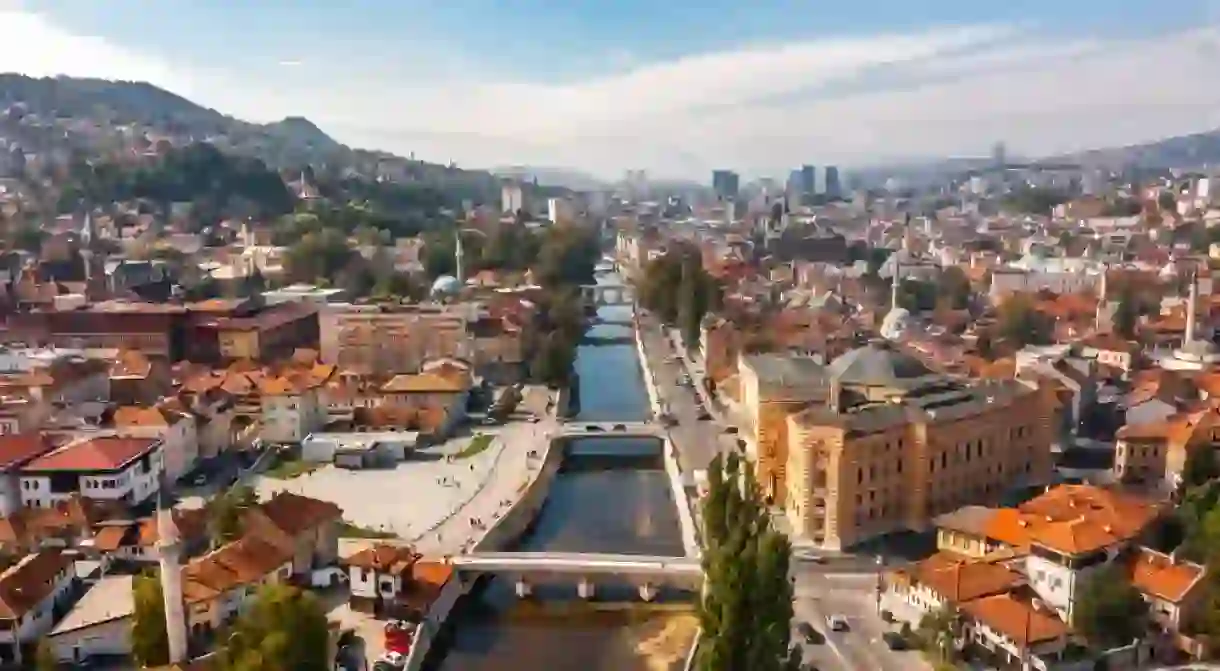The Top Things to See and Do in Sarajevo

The capital of Bosnia and Herzegovina has been at the centre of major historical events, namely the assassination of Archduke Franz Ferdinand in 1914 and the horrors of a four-year civil war that played out until 1995. Today, however, Sarajevo is the political, social and cultural centre of the country, known for its celebration of peaceful religious coexistence. Here’s our list of the top things to see and do.
Gazi Husrev-beg Mosque
Mosque

Latin Bridge
Bridge
Kovači Memorial Cemetery
Cemetery, Memorial
Sarajevo Tunnel Museum
Museum

Jewish Museum
Museum
Among the numerous museums devoted to aspects of Sarajevo’s rich history, one of the best is the Jewish Museum of Bosnia and Herzegovina, housed in the 16th-century Old Synagogue, next door to the current, contemporary place of worship. Escaping persecution in other parts of Europe, Sarajevo was happy to welcome Jewish arrivals in the late 1400s. The museum exhibits diverse items that belonged to the community, and is a great introduction to this fascinating aspect of Sarajevo’s story.
Eat ćevapi
Architectural Landmark
When hunger pangs strike, there’s only one thing for it: a plate of ćevapi, the national dish of Bosnia. Grilled minced beef is fashioned into elongated meatballs, like small sausages, and a portion consists of several, served in a pitta or flatbread with onions and sauce. A cheap dish, which was simple to make for rebels and outlaws, ćevapi evolved into a local staple during the centuries of Ottoman occupation. You’ll find it widely served in restaurants, and it’s also a popular street food, if you fancy lunch on the hoof.
Sarajevo City Hall
Building, Architectural Landmark
One of the most stunning architectural examples from Austria-Hungary’s era of imperial rule (1878–1918) is the town hall, or Vjećnica, as it is known locally. Built in 1898, it suffered sustained damage from Serbs during the civil war in the 1990s, hence the extensive recent refurbishment. Original specifications were observed and copied for each replacement detail, and the result is impressive. Interiors are resplendent with intricate carvings, painted patterns and beautiful stained glass, as well as archways, windows and staircases featuring exquisite geometric elements.
Baščaršija
Architectural Landmark, Market
Sarajevo’s Old Town is its historic core, lined with architecture dating back to the 15th century. Just as it was at that time, the area is a market and bazaar as well as the cultural heart of the contemporary city. Woven with narrow cobbled streets, it is a district of small shops full of character, blending Eastern European and Turkish influences. Key among its focal points is the main square with its postcard-famous fountain in the middle – it’s a must-see sight, if you can find it amid the hundreds of pigeons flapping about. With a great selection of traditional restaurants, cafes and coffee houses, this is an inviting area to stroll around and explore.
Reminders of the war
Architectural Landmark
Walking around Sarajevo, you can’t fail to notice the scars of the civil war, the bullet holes and the shell-blast damage. The tragedy that played out is still relatively recent, and the nation continues to rebuild. Walls display grim evidence of gunfire and explosions. As its unofficial name, Sniper Alley, suggests, the area around the garish-yellow Holiday Inn was one of the most dangerous in the city, bristling with snipers and offering very little opportunity for shelter. The main thoroughfare, Zmaja od Bosne, is now a commercial street, but it feels eerie once you learn the details of its bloody recent past.
Sacred Heart Cathedral
Cathedral
Saint Joseph's Church
Church

If you find yourself in the Marijin Dvor area, seek out Saint Joseph’s, with its gemlike, restored stained-glass and elaborate marble altars. Sandwiched between the thundering traffic of the Maršala Tita and the gleaming concrete and plate glass of the Alta Shopping Center, the church feels like a relic of a distant century, with its mullioned windows, neo-romanesque arches and white stone walls. In fact the church was finished in 1940, and was architect Karel Pařik’s last major work; the square outside the church is called Trg Karla Paržika in his honour.
Sebilj
Architectural Landmark
Water-dispensing kiosks, or sebilj, used to stand at many of Sarajevo’s crossroads. This iconic landmark, a small domed pavilion of wood and stone built in 1753, is the city’s last surviving sebilj. It was replaced more than 100 years ago after being damaged by fire. Four centuries of Ottoman rule have left their distinctive mark on the city’s architecture, so architect Alexander Wittek’s revival is perfect for this well-known meeting point in Sarajevo’s 15th-century Baščaršija market. Food stalls and cafes surround this pigeon- and tourist-thronged pedestrian square.
Phoebe Taplin contributed additional reporting to this article.













